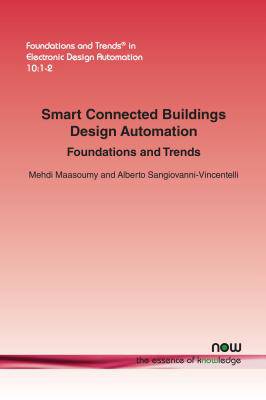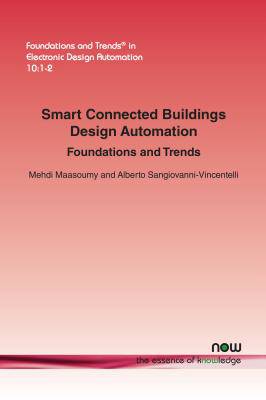
- Retrait gratuit dans votre magasin Club
- 7.000.000 titres dans notre catalogue
- Payer en toute sécurité
- Toujours un magasin près de chez vous
- Retrait gratuit dans votre magasin Club
- 7.000.0000 titres dans notre catalogue
- Payer en toute sécurité
- Toujours un magasin près de chez vous
Smart Connected Buildings Design Automation
Foundations and Trends
Mehdi Maasoumy, Alberto Sangiovanni-Vincentelli
134,45 €
+ 268 points
Description
The term intelligent or smart building refers to the next generation of buildings that provide new levels of comfort to the occupants with minimum possible energy consumption. They not only follow commands but also proactively learn from occupants' behavior and adapt their operation based on the indoor and outdoor conditions. These buildings are no longer solely consumers of energy, but also significant players in the ecosystem of the smart grid, in that they provide regulation services to the grid as well as energy if equipped with solar panels or other green sources. Intelligent buildings are not only safe by design but also react in the case of a fault, system malfunction, or cyber-attack to steer the system into a safe operating region. There has been much research in academia and industry towards this goal. Smart Connected Buildings Design Automation: Foundations and Trends provides the reader with a broad overview of the activities in the field of smart connected building design automation that attempts to make the vision a reality. The overarching range of such activities includes developing simulation tools for modeling and the design of buildings, and consequently control algorithms proposed to make buildings smarter and more efficient. It goes on to survey real-world and large-scale implementation of such control strategies on physical buildings. It then presents a formal co-design methodology to design buildings, taking the view that buildings are prime examples of cyber-physical systems where the virtual and physical worlds meet. It concludes by describing the growing role of buildings in the operation of the smart grid. Smart Connected Buildings Design Automation: Foundations and Trends will be of interest to industry professionals and researchers who work in the area of smart buildings, smart cities, and smart grid, with an emphasis on energy efficiency, simulation tools, optimal control, and cyber-physical systems for the emerging power markets.
Spécifications
Parties prenantes
- Auteur(s) :
- Editeur:
Contenu
- Nombre de pages :
- 160
- Langue:
- Anglais
- Collection :
- Tome:
- n° 31
Caractéristiques
- EAN:
- 9781680831009
- Date de parution :
- 05-01-16
- Format:
- Livre broché
- Format numérique:
- Trade paperback (VS)
- Dimensions :
- 156 mm x 234 mm
- Poids :
- 231 g

Les avis
Nous publions uniquement les avis qui respectent les conditions requises. Consultez nos conditions pour les avis.






